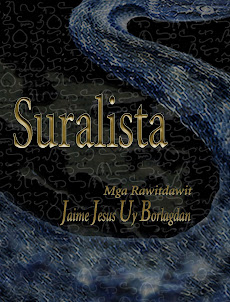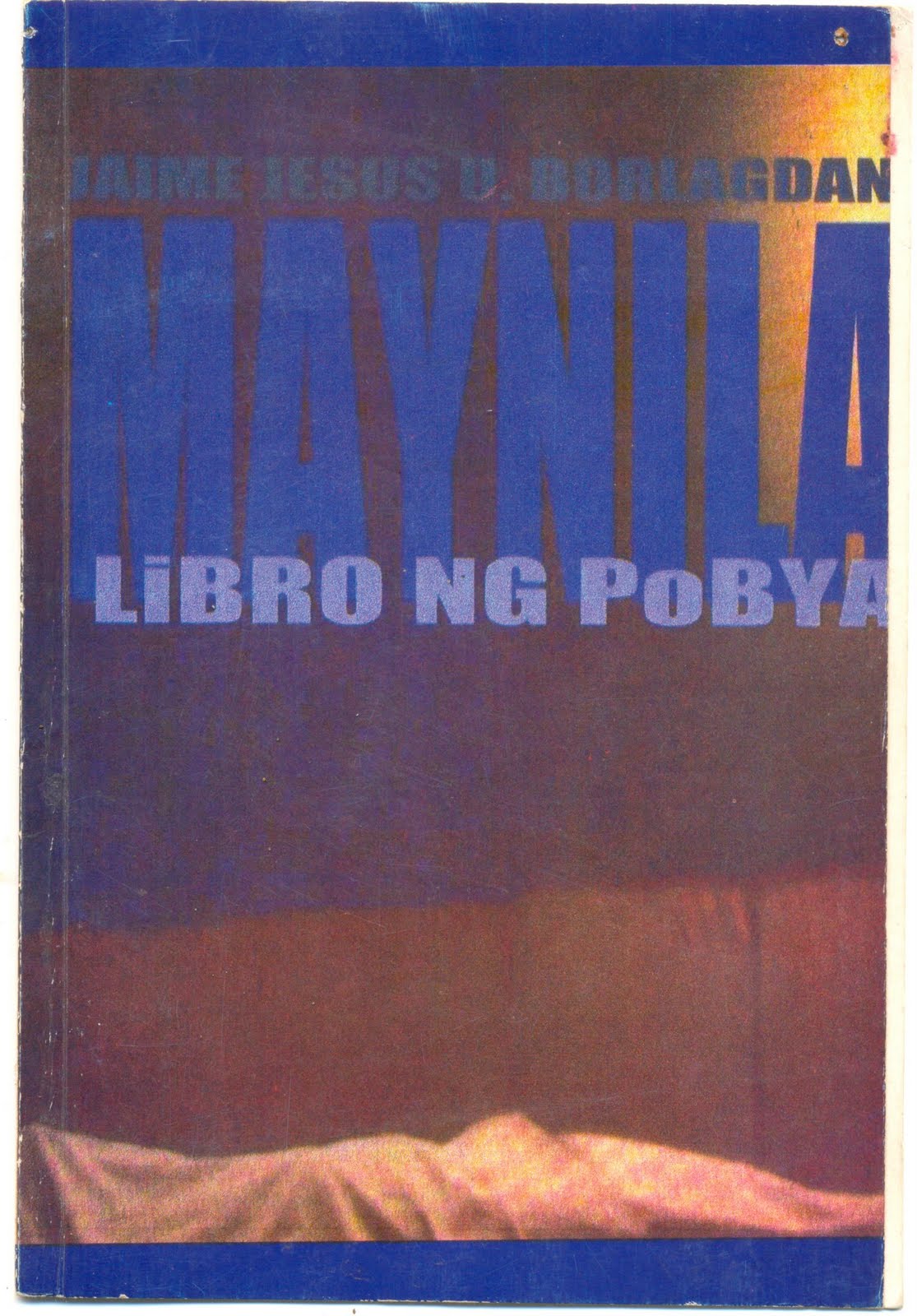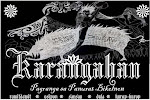Pag may sentro, dakulaon an posibilidad ki pagpalaen, opresyon, pag-imposar. Mas maray nang baranga—an pirit pigsasararo—kaysa magpalaom sa tinubog na kulungan kan sagin yunipikasyon.
Iagi ta sa osipon:
Igwa daang burabod sa tahaw kan kadlagan na nahaharungan kan mga rimuranon na talapang. Mala nasa rona ninda an solamenteng burabod ki tubig kun sain an ibang mga hayop nag-iinom, sinda an nasusunod sa bilog na kadlagan. Sa totoo, dai man baga ki may sadiri kaini, ugaring sindari ini kaining mga naghahade-hade. Ngonian, mala mga tagsadiri kan sarong importantehon na produkto, may poder sindang magmando, sa patakot na huhudungon ninda an burabod gamit an saindang rimuranon na dila.
Kaya su mga hayop, dawa su mga darakula, leyon, upon, musang, dai nakaka-aser sa mga kuluguhon. Iyo na ito su pagluwas kan mga sugo na an dapat sana daang kaonon sa kadlagan su arog kan pigkakaon ninda, namok, layug-layug buda langaw; an dapat sanang paghururon sa kadlagan sa tataramon na Kokak.
Bako man ngani pagmakasadiri daa an mawot kan mga katalapangan, kundi an pagsararuon an kakadlaganan na nagtatalibong an buhay sa burabod ninda. Kaya sa bagong sistema, su agila nagkaon ki diwit, mantang su halas nag-kakanta ki Kokak. Magayunon sa pagdangog kan mga kabakab, pero dai ito naghaloy. Nagniwang su orig kan anas sana insekto, buda nabilot su salampati kan anas sana Kokak. Pero dai sindang naginibo kundi an umutob ta mas dai ninda matios an saindang paha.
Sarong aldaw, sarong ayam an napaagi sa burabod. Garo dayo ini duman ta dai ngani kaini hinade su talapang na nakabantay sa magapo—ta sainda baga, an talapang kapantay man kan iba. Sinita ini kan talapang na dai lamang daa ini nagpatabi saiya. Nagpatabi su ayam buda naghagad ki dispensa. Dai nauyunan kan talapang ta Batok an ginamit niyang pakihuron, muya kan talapang su opisyal na Kokak an gamiton. Nangalas su ayam ta sainda dai man ki arog kaining kabuahan. Kan tinaram niya ito sa talapang, sabi kaini, iba daa digdi, digdi daa, sararo an gabos na hayop, buda mala iyan saindang mga talapang buda sa Kokak, kaya dapat sumunod man daa siya kun muya niyang maka-inom. Nagsayuma su ayam; pinawara siya kan talapang.
Daing naginibo su ayam kundi maghanap na sanang lukohan sa sarong limpoy buda ikaturog na sana an paha. Pero sa ngana niyang kamawotan na makainom ki tubig, nagpara kamaskamas siyang garo na mauutsan. Sa ngana niya garong paha, su kamas-kamas niya naging bulot, dangan, kalot, dangan bubon.
Kan nakaabot ito sa ibang hayop, saro-saro sinda naghingowa. Su manok, turuwang-tuwang sa pagkayas; su kino ginamit su saindang ngimot; sinuag-suag kan damulag su saiyang natindugan. Dawa sain nagkaigwang bubon, dawa sain nagkaigwang tubig.
Sa pagtalingkas kan gabos sa tahaw na burabod nag-awit an mga bayong sa sadiri nindang huni, nagwawaratihan an mga ukay sa sainda man paagi, nagsabsab giraray ki awot an baka, buda apwera kan mga talapang na naibalik sa dati kun sisay talaga sinda, nag-ogma an kadlagan, nag-ogma an gabos buda nag-ogma pa.
Agosto 3, 2010. Karangahan Blvd., Bombon, Tabaco City.
Ako Kalag Omay (2015)
Buhay-Gadan (2014)
Ha'dit sa byahe buda iba pang mga bagahe (2013)
X (2012)
Hamot kan Narumdom (2011)
Suralista: Mga Rawitdawit (2010)

Makukua sa: Gabos na Lucky Educ. outlets (Naga, Legazpi, Tabaco, Polangui, Sorsogon); Tabaco: Arden,Imprintados Advertising. Naga: Lucky Educational Supply. O kaya sa 0917 524 2309
Que Lugar Este kan Dayo sa Sadiring Banwa (2009)

"Maunod, magabat. Alagad makamuyahon ta magian basahon, ta makamuyahon saka labas an tanog. Makata, uragon." Gode B. Calleja. Abilable sa gabos na Lucky Educ. Supply Outlets; Kulturang Bikolnon. For inquiries:0917 524 2309
Maynila: Libro ng Pobya (1999)

Makukua sa gabos na Lucky Educ Supply outlets buda sa Imprintados Ads sa Tabaco City. Para sa mga kahaputan mag-text sa 0917 524 2309
Karangahan Online
On Borlagdan's Poetry
A Rush of Metaphors, Tremor of Cadences, and Sad Subversions
By Tito Genova Valiente
titovaliente@yahoo.com
The first time I read the poems of Jesus Jaime Borlagdan, Jimple to those who know him, I felt immediately the seething movement of the words. There was a rush of metaphors in his works. I immediately liked the feeling that the rhythm caused in one’s reading for poetry, in my book, should always be read aloud. I was hearing the voice. It was a voice that happened to sound from afar and it was struggling to link up with a present that would not easily appear.
It was heartbreaking to feel the form. I felt the lines constricting. I saw the phrases dangling to tease, breaking the code of straight talk and inverting them to seduce the mind to think beyond the words. Somewhere, the poems were reverting back to direct sentences, weakening the art of poetry with its universe of ellipses and nuances, but then as suddenly as the words lightened up, the poems then dipped back into a silent retreat, into a cave, to lick its own wounds from the confrontation that it dared to initiate.
For this column, I decide to share parts of the longer paper I am writing about this poet.
In Karangahan, the poet begins with: Bulebard, ikang muymuyon na salog/ki gatas buda patenteng nakahungko,/ako ngonian kahurona. Borlagdan translates this into:Boulevard, you forlorn river/ of milk and downcast lights/ speak to me now. Savor the translation, for in Bikol that which is a dialog has become an entreaty.)
The poet is always talking to someone but in An istorya ninda, an osipon ta, he talks about a the fruits of some narrative: Ta sa dara nindang korona kita an hadi/ sa krus, kita su may nakatadok na espada./Naitaram na ninda an saindang istorya./Punan ta na man su satong osipon./This I translate as: For in the crown they bear we are the King/ on the cross, with the embedded sword./ Marvel at this construction, as the poet cuts at the word “hadi” and begins the next line with “krus” and the “espada.” Marvel, too, at how he looks at conversion and faith, a process that made us special but also wounded us with ourselves stuck with the sword.
Finally, the poet says those lines of the true believer: They have already spoken their story, now let us begin with our tale. The poet does not have a translation but will the istorya in this line be “history” and osipon be “myth.” Shall these last four lines in the first stanza be both a subversion of our faith embedded in a foreign culture or a celebration of what we are not, and what we have not become?
Puni na an paghidaw. Puni na an pagluwas/hali sa kwartong pano ki luha, puni na/an paghiling sa luwas kan bintana./Puni na an paghidaw para sa binayaan./Puni na an pagsulit sa daluging tinimakan./Puni na an paghidaw sa mga sinugbang utoban. Terrifying lines as the poet calls us to begin the remembering and also begin the moving out from the room full of tears. In the poet’s mind, the lacrimarum vale or valley of tears had become an intimate area for instigating his own release.
The rhythm is there as in a prayer. But it is no prayer. There is the repetition but it is not a plea. There is the self but it is one that has turned away from itself into something else. That self is one that shall face the recollection of the faith that has been burned.
And yet the poet, resolute when he wants to, loves to sing and hint of fear and anxiety. Even when he is merely observing children playing in the rains, he summons images of terrible beauty. The skies become diklom na pinandon na “may luho” (with hole). From this hole, comes the sarong pisi ki sildang/ tisuhon na buminulos. The poet stays with this metaphor with such intensity that the silken thread coming from the hole justifiably becomes luhang garo hipidon na busay/paluwas sa mata/kan dagom. Dark wit and a penchant for the horrifying are tandem graces in these lines.
This is the poet who can, without self-consciousness, tell us of the …haya/kan mga ayam na namimibi/nakakapabuskad ki barahibo/nakakaulakit ki lungsi. He whispers of “halas na rimuranon, malamti/sa hapiyap kan mga bituon.”
This is a startling universe, where dogs pray (and bay), and where fears bloom and paleness afflicts and infects, and serpents are caressed by the stars.
Blog Archive
-
►
2016
(11)
- ► 11/27 - 12/04 (1)
- ► 11/20 - 11/27 (5)
- ► 04/10 - 04/17 (1)
- ► 03/20 - 03/27 (1)
- ► 02/21 - 02/28 (2)
- ► 02/07 - 02/14 (1)
-
►
2015
(12)
- ► 11/01 - 11/08 (1)
- ► 10/25 - 11/01 (2)
- ► 09/20 - 09/27 (1)
- ► 03/29 - 04/05 (3)
- ► 03/15 - 03/22 (2)
- ► 02/01 - 02/08 (1)
- ► 01/18 - 01/25 (1)
- ► 01/11 - 01/18 (1)
-
►
2013
(23)
- ► 05/26 - 06/02 (1)
- ► 05/19 - 05/26 (1)
- ► 05/12 - 05/19 (1)
- ► 05/05 - 05/12 (1)
- ► 04/28 - 05/05 (1)
- ► 04/21 - 04/28 (2)
- ► 04/14 - 04/21 (2)
- ► 04/07 - 04/14 (1)
- ► 03/31 - 04/07 (1)
- ► 03/24 - 03/31 (1)
- ► 03/17 - 03/24 (1)
- ► 03/10 - 03/17 (1)
- ► 03/03 - 03/10 (1)
- ► 02/24 - 03/03 (1)
- ► 02/17 - 02/24 (1)
- ► 02/10 - 02/17 (1)
- ► 02/03 - 02/10 (1)
- ► 01/27 - 02/03 (1)
- ► 01/20 - 01/27 (2)
- ► 01/13 - 01/20 (1)
-
►
2012
(59)
- ► 11/04 - 11/11 (2)
- ► 10/28 - 11/04 (4)
- ► 10/21 - 10/28 (2)
- ► 10/14 - 10/21 (3)
- ► 09/30 - 10/07 (1)
- ► 09/23 - 09/30 (1)
- ► 09/16 - 09/23 (1)
- ► 09/09 - 09/16 (2)
- ► 08/26 - 09/02 (1)
- ► 08/12 - 08/19 (1)
- ► 08/05 - 08/12 (1)
- ► 07/29 - 08/05 (1)
- ► 07/15 - 07/22 (1)
- ► 07/08 - 07/15 (1)
- ► 05/20 - 05/27 (2)
- ► 05/06 - 05/13 (2)
- ► 04/29 - 05/06 (4)
- ► 04/22 - 04/29 (1)
- ► 04/08 - 04/15 (1)
- ► 04/01 - 04/08 (5)
- ► 03/25 - 04/01 (2)
- ► 03/18 - 03/25 (1)
- ► 02/19 - 02/26 (1)
- ► 02/05 - 02/12 (1)
- ► 01/29 - 02/05 (4)
- ► 01/22 - 01/29 (4)
- ► 01/15 - 01/22 (7)
- ► 01/08 - 01/15 (1)
- ► 01/01 - 01/08 (1)
-
▼
2011
(34)
- ► 12/11 - 12/18 (1)
- ► 12/04 - 12/11 (1)
- ► 11/20 - 11/27 (1)
- ► 11/06 - 11/13 (2)
- ► 10/30 - 11/06 (1)
- ► 10/16 - 10/23 (1)
- ► 10/09 - 10/16 (3)
- ► 10/02 - 10/09 (5)
- ► 09/25 - 10/02 (1)
- ► 09/18 - 09/25 (1)
- ► 08/28 - 09/04 (2)
- ► 07/24 - 07/31 (1)
- ► 07/03 - 07/10 (1)
- ► 06/26 - 07/03 (1)
- ► 06/12 - 06/19 (1)
- ► 05/29 - 06/05 (1)
- ► 05/15 - 05/22 (1)
- ► 04/10 - 04/17 (1)
- ► 03/27 - 04/03 (1)
- ► 03/13 - 03/20 (1)
- ► 03/06 - 03/13 (1)
- ► 02/27 - 03/06 (1)
- ► 02/13 - 02/20 (1)
- ► 01/23 - 01/30 (1)
- ► 01/09 - 01/16 (1)
-
►
2010
(28)
- ► 12/26 - 01/02 (1)
- ► 12/12 - 12/19 (1)
- ► 11/28 - 12/05 (1)
- ► 11/14 - 11/21 (1)
- ► 10/31 - 11/07 (1)
- ► 10/10 - 10/17 (1)
- ► 09/26 - 10/03 (1)
- ► 09/19 - 09/26 (1)
- ► 09/12 - 09/19 (1)
- ► 08/29 - 09/05 (1)
- ► 08/15 - 08/22 (1)
- ► 07/25 - 08/01 (1)
- ► 07/11 - 07/18 (1)
- ► 06/27 - 07/04 (1)
- ► 06/13 - 06/20 (1)
- ► 05/30 - 06/06 (1)
- ► 04/25 - 05/02 (1)
- ► 04/11 - 04/18 (1)
- ► 03/28 - 04/04 (1)
- ► 03/14 - 03/21 (1)
- ► 02/28 - 03/07 (1)
- ► 02/14 - 02/21 (2)
- ► 01/31 - 02/07 (1)
- ► 01/24 - 01/31 (1)
- ► 01/10 - 01/17 (2)
- ► 01/03 - 01/10 (1)
-
►
2009
(20)
- ► 12/20 - 12/27 (1)
- ► 12/13 - 12/20 (1)
- ► 11/22 - 11/29 (1)
- ► 11/15 - 11/22 (1)
- ► 10/25 - 11/01 (1)
- ► 09/06 - 09/13 (1)
- ► 08/02 - 08/09 (1)
- ► 07/05 - 07/12 (1)
- ► 06/21 - 06/28 (1)
- ► 05/31 - 06/07 (1)
- ► 05/10 - 05/17 (1)
- ► 05/03 - 05/10 (1)
- ► 04/12 - 04/19 (1)
- ► 03/29 - 04/05 (1)
- ► 03/15 - 03/22 (1)
- ► 03/01 - 03/08 (1)
- ► 02/15 - 02/22 (1)
- ► 02/01 - 02/08 (1)
- ► 01/25 - 02/01 (1)
- ► 01/11 - 01/18 (1)
-
►
2008
(14)
- ► 12/28 - 01/04 (1)
- ► 11/30 - 12/07 (2)
- ► 11/09 - 11/16 (1)
- ► 10/26 - 11/02 (2)
- ► 10/05 - 10/12 (2)
- ► 09/14 - 09/21 (1)
- ► 08/17 - 08/24 (1)
- ► 08/10 - 08/17 (1)
- ► 07/06 - 07/13 (1)
- ► 06/08 - 06/15 (1)
- ► 05/18 - 05/25 (1)
-
►
2007
(7)
- ► 09/23 - 09/30 (1)
- ► 08/19 - 08/26 (1)
- ► 04/22 - 04/29 (5)
-
►
2006
(7)
- ► 10/15 - 10/22 (3)
- ► 09/03 - 09/10 (4)
-
►
2005
(4)
- ► 07/17 - 07/24 (1)
- ► 05/22 - 05/29 (1)
- ► 04/03 - 04/10 (1)
- ► 02/27 - 03/06 (1)
-
►
2004
(25)
- ► 12/05 - 12/12 (1)
- ► 10/31 - 11/07 (1)
- ► 10/24 - 10/31 (2)
- ► 09/05 - 09/12 (1)
- ► 08/29 - 09/05 (1)
- ► 07/25 - 08/01 (1)
- ► 02/29 - 03/07 (1)
- ► 02/22 - 02/29 (4)
- ► 02/15 - 02/22 (1)
- ► 02/08 - 02/15 (2)
- ► 01/04 - 01/11 (10)
Huron Suralista
Sunodon si Suralista
Facebook Badge
Facebook Badge
Sakuya pa
- Karangahan: Pagranga sa Panurat Bikolnon (ONLINE)
- Introduction to Jimple
- Jimple's Multiply Site
- Paikot sa Kirot: Kalipunan ng mga Tula sa Tagalog
- Que Lugar Este Kan Dayo Sa Sadiring Banwa: Mga Rawitdawit
- Mahalnas na Upon: Katipunan ki mga Osipon buda iba pang hurop-hurop
- Krear Bathala Propaganda Machine




